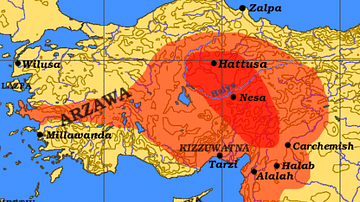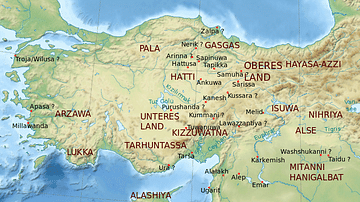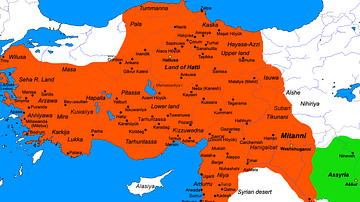Illustration
This map illustrates the shifting political landscape of the Ancient Near East in the 13th century BCE, a period marked by the rise of imperial powers and the decline of older kingdoms. The expansion of the Hittite and Assyrian empires redrew boundaries and altered regional dynamics, while the once-dominant Mitanni kingdom collapsed entirely.
By around 1300 BCE, the Hittite Empire (circa 1650-1190 BCE) had reached its territorial peak, asserting control over much of Anatolia and northern Syria. Meanwhile, the Middle Assyrian Kingdom (circa 1392-1056 BCE) began its aggressive ascent, pushing westward into former Mitanni lands. The power vacuum left by the disintegration of the Mitanni (circa 1500-1300 BCE) reshaped alliances and exposed smaller states to the growing imperial ambitions of neighboring powers. This map captures a crucial transitional moment—an age of rising empires and fading legacies.
About the Author
Cite This Work
APA Style
Netchev, S. (2021, November 15). The Ancient Near East, c. 1300 BCE. World History Encyclopedia. Retrieved from https://www.worldhistory.org/image/14813/the-ancient-near-east-c-1300-bce/
Chicago Style
Netchev, Simeon. "The Ancient Near East, c. 1300 BCE." World History Encyclopedia. Last modified November 15, 2021. https://www.worldhistory.org/image/14813/the-ancient-near-east-c-1300-bce/.
MLA Style
Netchev, Simeon. "The Ancient Near East, c. 1300 BCE." World History Encyclopedia. World History Encyclopedia, 15 Nov 2021, https://www.worldhistory.org/image/14813/the-ancient-near-east-c-1300-bce/. Web. 01 Jul 2025.








